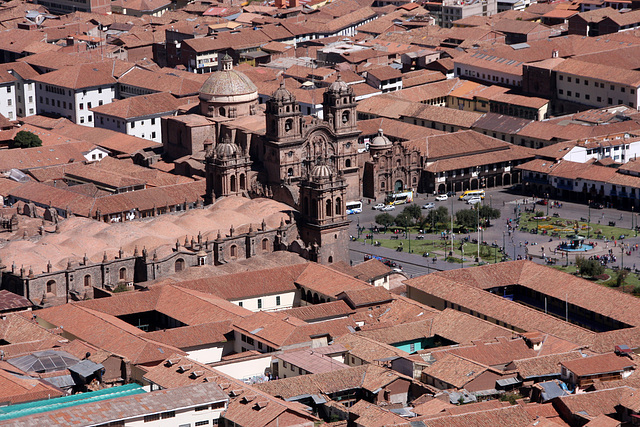City in the hills
Ruins in the desert
Huaca del Sol (Explored)
The winter sky (Explored)
Ai apaec
Ai apaec
Just a dusting (Explored)
Layers of storm clouds
Coming through the clouds (Explored)
Pipe organ (Explored)
Ceiling dome
Follow the curve (Explored)
Spiders
Dancing men
Impressing the lady
It's all about the skirt (Explored)
South of the Square (Explored)
Dark-eyed Junco
Northern Cardinal
Blue Jay (Explored)
Dancing with a Peruvian Paso
Peruvian Paso
Mmmmmm, good.
Shovel away
Up on the roof
Winter baseball (Explored)
Icy fingers
This used to be a two way street (Explored)
Woven Orb
Orchid Orb
Happy Valentine's Day (Explored)
Valentine's Day Orb
Buried (Explored)
Icicle farming
Come in while you still can
Getting the newspaper
Radiate (Explored)
In a trance (Explored)
Hat in the shadows
Hand sewn
Cooking potatoes
In the thick of it (Explored)
Incan walls of Saqsaywaman
Incan stonework
La Catedral (Explored)
See also...
See more...Keywords
Authorizations, license
-
Visible by: Everyone -
All rights reserved
-
396 visits
Plaza de Armes, Cusco, Peru


"The Plaza de Armas was called ‘Huacaypata’ after its construction during the Inca Empire. The original plaza was twice the current size, and functioned as the cultural center of Inca life. Cuzco, which was the capital of the Inca Empire, was designed in the shape of a Puma to reflect their Inca animal mythology. Historians proclaim the plaza was intentionally built at the location of the heart of the Puma, in the center of the city. The location of the Plaza is no coincidence. The Plaza is used for most of the city’s events, gatherings, and festivals. Historians feel that the Plaza functioned as the cultural center, or "heart," of the Inca Empire.
In 1532 Spanish Conquistador Francisco Pizarro defeated the Inca Empire and took control of Cuzco, renaming the Plaza to "Plaza de Armas." The Spanish reduced the size of the Plaza by building two Churches, la Catedral and la Compañia. La Catedral was built where the palace of Inca Wirancocha once stood. La Compañia was built in 1571 by the Jesuits during the time of Wayna Capac, the last ruler of the unconquered empire. An earthquake in 1650 destroyed the church leading to its immediate reconstruction, which resulted in one of the most beautiful churches in Latin America. The Plaza de Armas portrays the city's diverse history while remaining the center of Cuzco life and culture."
www.pps.org/great_public_spaces/one?public_place_id=612
AIMG 1410
In 1532 Spanish Conquistador Francisco Pizarro defeated the Inca Empire and took control of Cuzco, renaming the Plaza to "Plaza de Armas." The Spanish reduced the size of the Plaza by building two Churches, la Catedral and la Compañia. La Catedral was built where the palace of Inca Wirancocha once stood. La Compañia was built in 1571 by the Jesuits during the time of Wayna Capac, the last ruler of the unconquered empire. An earthquake in 1650 destroyed the church leading to its immediate reconstruction, which resulted in one of the most beautiful churches in Latin America. The Plaza de Armas portrays the city's diverse history while remaining the center of Cuzco life and culture."
www.pps.org/great_public_spaces/one?public_place_id=612
AIMG 1410
Gabi Lombardo, , , RHH and 6 other people have particularly liked this photo
- Keyboard shortcuts:
Jump to top
RSS feed- Latest comments - Subscribe to the comment feeds of this photo
- ipernity © 2007-2025
- Help & Contact
|
Club news
|
About ipernity
|
History |
ipernity Club & Prices |
Guide of good conduct
Donate | Group guidelines | Privacy policy | Terms of use | Statutes | In memoria -
Facebook
Twitter

www.ipernity.com/group/343457
www.ipernity.com/group/tolerance
Seen in "Churches, Chapels and Monasteries."
Sign-in to write a comment.